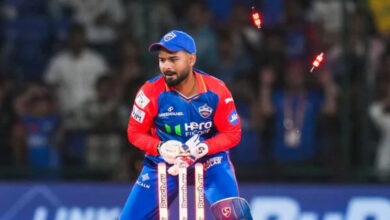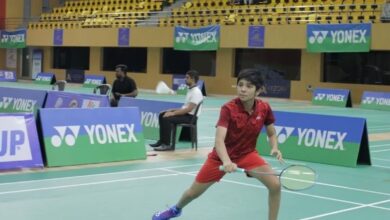IND vs AUS: How the finger injury might have helped Mitchell Starc get the swing back

The finger injury that had forced Mitchell Starc to miss the first two Tests of the Border Gavaskar Trophy might have played a role in his rich haul in the ODI series, where he has grabbed eight wickets in two games, scything through the top-order in both Mumbai and Vizag. “Maybe the finger injury has helped it. Maybe it’s a good injury. It’s something I have worked on for a little while now,” he told Aaron Finch in an interview to Star Sports.
Before the injury to his middle finger which he incurred when fielding during the second Test against South Africa in Melbourne, Starc had endured a phase where he was struggling with his wr position at the release, and hence unable to swing the ball late into the right-handed batsmen. He was still getting wickets, the occasional ball swung back too, but he was not as irrepressibly threatening as he had been in the series against India.
He was unable to flick the wrs at the last moment, or the snap as the fast-bowlers say, which meant he could not swing the ball as wickedly late as he could. “The ball was not coming out of my hand as much as I would have liked it. But I have worked on such things during the break,” he had said during his comeback Test in Indore.
Australia’s Mitchell Starc, second right, holds the ball after taking five wickets as he walks off with his teammates at the end of their fielding innings during the second one-day international cricket match between India and Australia, in Visakhapatnam, India, Sunday, March 19, 2023. (AP Photo/Surjeet Yadav)
The injury to the middle finger, which was in a splint for six weeks, meant that he had to let the ball go off his ring and index fingers while he trained during his layoff. This inadvertently benefitted him in getting his stability with the seam position.
Post injury, starting from Indore, he set the tone for the Test win. During a searing new-ball spell he could have nailed Rohit Sharma twice in the first over, but for Australia’s reluctance to take the review. He has rediscovered the seam position that facilitates devastating late swing.
A slightly higher arm-action too has helped him with maintaining an upright seam position at release. “I feel like my action is slightly higher. It has helped my arm power which in turn helps me present the seam a little bit better. My seam has been certainly good for the last few (games) and is helping me swing the ball,” he elaborated.
Not just late inward swing, the potency of which Suryakumar Yadav would attest to, he has been quick too. He goes through his run-up faster — a reason he doesn’t leap as high as used to for late acceleration — enabling him to strike a delicious rhythm. There is no stutter, but he is as fluent as a flowing river. His action, essentially, is smooth and easy, almost natural and comparatively less injury-prone, a reason he has played more international games than his contemporaries Josh Hazlewood and Pat Cummins.
Tactically, though, his approach has not changed. “My plan hasn’t changed for 13 years: bowl full, hit the stumps, try and swing it. So it’s certainly not a new game plan these last two games,” Starc said in Vizag.
Australia’s Mitchell Starc bowls a delivery during the second one-day international cricket match between India and Australia, in Visakhapatnam, India, Sunday, March 19, 2023. (AP Photo/Surjeet Yadav)
His plan is minimalic. Swing away or angle the ball across the right-hander, before slipping in the late-curling in-ducker. Sometimes, the swing doesn’t manifest, and it becomes easy leg-side boundary pickings. But he is unbothered leaking runs in pursuit of wickets. “That’s been my role for a long time, to try and get wickets up front in the Powerplay. At times that means I’m probably more expensive, but I’m trying to bring in all modes of dismissal,” he added.
A classic case was in Vizag, where he leaked 6.62 runs an over, but he skinned through the top-order, setting India back to a point of no comeback, in the Powerplay overs. “When you’ve got a powerhouse batting unit that India do have, if you can take wickets in the Powerplay it means we sort of control the game in some respects, which is what we did today,” he would say.
He has been a powerplay hangman. Only Mohammed Siraj had picked more wickets than Starc in powerplays since the 2019 World Cup (26 and 25), striking once in every 20 balls (compared to Siraj’s 22). Thus among all the threats in Chennai, Starc looms most ominously.







